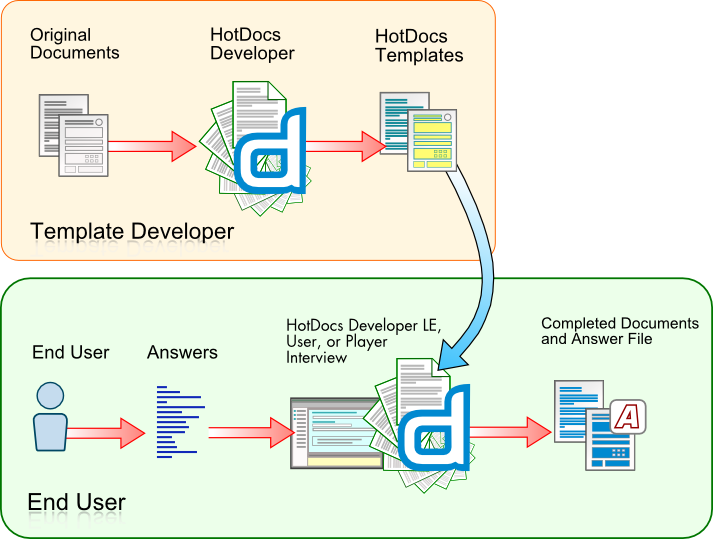HotDocs User Tutorial
Overview
These lessons introduce you to important concepts and features available in HotDocs. Because of the work you do in these lessons the procedure should be familiar when you begin automating your own documents, allowing you to focus on your documents, not HotDocs.
These lessons are short and are structured so you can complete each one in separate sessions. This allows you to learn HotDocs in the spare minutes you have during the day. You do not need to dedicate a large block of time to using the tutorial.
You should complete all of these lessons in order. In these lessons:
- You will learn how to create template libraries and add templates to them.
- You will learn how to create a new template and replace text in it with answer field tags, called variables. You will then learn how to group related variables into dialogs so that questions can be presented to users in logical groups.
- You will also learn how to create variables that perform simple as well as complex calculations.
- You will learn how to make sections of text in a template conditional so the text will be merged in the assembled document only when it is needed.
- Finally, you will learn how to repeat variable fields so a user can enter lists of answers.
The documents used in these tutorials were drafted to suit the purposes of the tutorial. They are not provided as valid legal documents.
What is HotDocs?
In your day-to-day routine, you may need to create custom documents for clients or customers. Without HotDocs, you must manually search through the document and replace the text that needs to be changed with the new information. This process can be time-consuming and error-prone.
Using HotDocs, however, you can transform any document into an interactive template by marking changeable text with HotDocs variables. Then, the next time you want to create a custom document, you can assemble the interactive template you’ve created. As you do this, you will be prompted for the information needed in the document and that information will be merged into the document.
Virtually any document in your workflow can be converted to a HotDocs template, including lengthy and complex documents. Using HotDocs, you can compile an invaluable repository of special language, unique clauses or terms, correspondence, and more.
The following diagram shows the HotDocs process, from template development to document assembly:

By completing the various tutorials in this guide, you will learn how to use HotDocs to transform documents you regularly customize for clients into HotDocs templates.